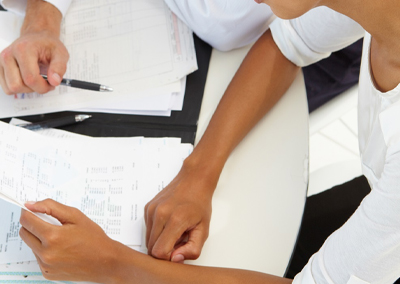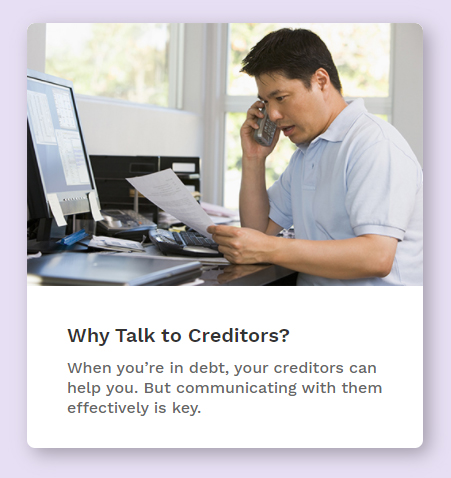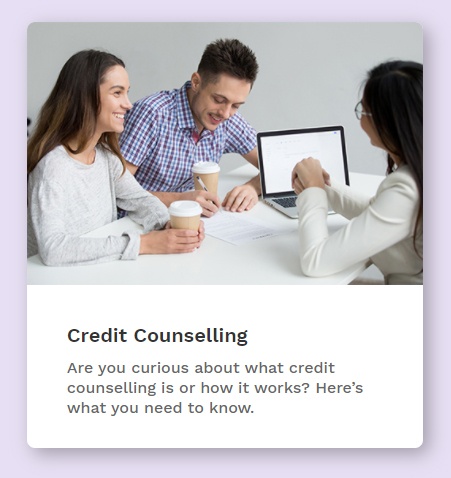5 Step Plan to Debt Reduction and Better Budgeting
By Debra Pangestu
 Falling behind on your credit card and loan payments can leave you feeling powerless, but with some debt reduction tips and by adopting good budgeting habits, you will be able to eliminate debt and become financially free.
Falling behind on your credit card and loan payments can leave you feeling powerless, but with some debt reduction tips and by adopting good budgeting habits, you will be able to eliminate debt and become financially free.
There isn’t an easy solution on how to get out of debt in Canada, but with some hard work and dedication you can implement these five debt reduction strategies that will reduce debt and, in time, help you pay off debt, refresh your financial picture, and become debt free.
Assess Your Financial Situation and Organize Debt
The first thing you should do to reduce your debt is to assess your financial situation and put all your debts in writing. Most of us tend to guesstimate the amount of debt owing and how much we earn each month, which can cause us to live – and spend – beyond our means. So, it’s important to be honest with yourself because you’ll never hit your target if you don’t know where it is.
By listing out all your debts in addition to your income sources, you’ll have a realistic picture of your financial situation. Organizing debt can be an eye-opening – and humbling – exercise, but once you know how much you owe and to whom, you’ll be in a better position to tackle your debt problems.
Related: The Easiest Way to Prevent Financial Problems: Get Organized
Consider Debt Consolidation to Lower Interest or Negotiate with Creditors
If you have a fairly large amount of debt, you can look into lowering your interest rates on some of your high interest debts by negotiating a rate reduction with your creditors.
You can also consider getting a debt consolidation loan from a lending institution, which will help lower your interest payments. The loan will enable you to repay all your debts at once, and you’ll only have to make one monthly payment, often at a lower interest rate than what you are currently paying. Not only will this save you money on interest, but it also allows you to keep better track of your debt repayments.
Create a Budget to Lay the Foundation of a Reliable Debt Reduction Plan
Once you have an accurate picture of your financial situation, it’s time to create a budget, which is the foundation of a reliable debt reduction plan.
To help with creating your budget, track your spending for about a month by writing down all your expenses. Make sure you track both your fixed expenses (mortgage, rent, utilities, car payments) and your variable expenses (entertainment, groceries, eating out). By watching where your money is spent, you’ll be able to see where it’s going and you’ll quickly figure out if you’re living within your means.
As you drop the totals for the expenses you’ve tracked into your budget, you’ll see if all of your income sources are enough to cover your expenses, debt payments, plus allow a small cushion in case of emergencies. If not, you’ll have to whittle down your expenses, such as eating out, daily coffees, or that expensive phone plan. You’ll have to make some sacrifices, but don’t deprive yourself.
While you’re creating a spending plan, it’s also important to set aside enough money for an emergency fund. You can contribute as little as $5 or as much $50, but it’s important that you have some cash reserves so you don’t turn to credit if an unexpected emergency – such as a car repair, job loss, or an illness – come up.
Related: How Savings Can Help You Stick to Your Plan to Pay Off Debt
And in terms of debt payments, make sure you’re avoiding the “minimum payment trap.” If you’re only paying the minimum amount, you’ll never eliminate debt.
Develop a Debt Reduction Plan and Stick to It
Once you’ve created a budget tailored to your needs and income, it’s time to create a debt reduction plan. A key component of any plan that involves paying off debt like this is to stop using your credit cards. You don’t have to cancel them or cut them up, but you can freeze them in a block of ice or stash them away so you’re less tempted to use them until you’ve cleared your debt. Diligently making credit card payments won’t do you any good if you’re still racking up purchases. A pay cheque planner can help you avoid this.
To stay on top of your debt payments, create a payment calendar outlining how much you owe to whom, and when the payment is due. To make things even easier, you can sign up for automatic bill payments to ensure you never miss a payment.
Once you’re comfortable meeting all your debt obligations, it’s time to consider accelerating your debt payments by trimming down your expenses even more. Small economies can mean huge savings, so consider ditching the gym membership or eating out less, and putting the savings towards your debt payments. A little goes a long way! For example, if you cut back on one lunch out each week, you can save anywhere from $25-$50 a month. And that means an extra $25-$50 to put towards your debt payments. This debt repayment calculator is a great tool that can help you find out how much debt you owe, and how long it will take you to pay it off.
Another key part of any reduce debt plan is to use financial windfalls smartly. If you have extra money, whether from a bonus, tax refund from the Canadian government, or birthday cash, use that to pay down your debt. This will further reduce your principle and save you money on interest.
Related: More Ideas & Strategies on How to Decrease & Eliminate What You Owe on Credit Cards
Set Financial Goals and Track Your Debt Repayment Process
While you’re trying to get out of debt, it’s important that you set some financial goals for yourself. Having financial goals may be the furthest thing from your mind, but you’ll be better prepared to weather the worst if you plan for the best. So whether it’s saving for a down payment on a house or going on a vacation, set some goals for yourself and stay focused.
It’s also important to set achievable milestones for your debt repayment, and to celebrate those milestones once you’ve reached them. For example, to celebrate paying $1000 off your credit card, treat yourself to a nice dinner. Do things that are important to you, but won’t put you back in debt. Having these milestones gives you something to look forward to, and keeps you motivated to reach your goals.
Another important part of your debt reduction program is to track your progress. While you certainly don’t want to fret over bills every day, it’s important to keep an eye on your spending and to revisit your budget every now and then. Our financial situation can change, and it’s important that our budgets reflect that. If you get a raise, use the extra money to bump up your debt payments. Or, if you find yourself with reduced income, you may have to cut back on expenses or scale back your debt payments so you can meet your basic needs like food and rent.
Becoming debt free takes time and effort, and the determination to stick to a debt reduction plan. Knowing how to budget and how to organize debt are key aspects of getting out of debt, but just as important is to set some financial goals. If you’re having difficulty organizing your debts or sticking to your budget, you can look into non-profit credit counselling. Our accredited, non-judgemental credit counsellors are here to provide you with debt relief options and to help you get out of debt. All appointments are free and completely confidential.






0 Comments